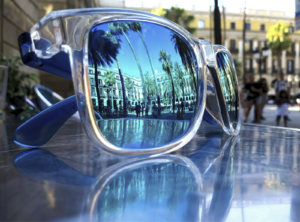
If you’re an avid cyclist or have ever wanted to hop on a bike and cruise down your favorite biking route, then you know how exhilarating it can be. But there’s more to this activity than just the fun of it; bicycling is also a great form of exercise and comes with its own unique set of safety protocols.
Whether you’re a novice cyclist just getting started or a seasoned vet out for one last ride before the snow arrives, brushing up on basic cycling safety is essential to ensure all your rides are enjoyable. In this article, we’ll review some crucial road rules when riding alongside motor vehicles and gear that will make any ride safer and more secure. So pedal on.
Overview of Biking Rules and Regulations
Biking has become an increasingly popular mode of transportation, providing a sustainable and healthy way to get around town. It is essential, however, for cyclists to be aware of the rules and regulations that govern their movements on the roadways. These regulations are implemented to ensure all road users’ safety, including pedestrians, motor vehicles, and fellow bikers. Some of the most important rules to remember include wearing proper safety gear, following traffic signals and signs, riding with traffic flow, and yielding to pedestrians.
Additionally, many cities have implemented specific bike lanes and routes, which should be utilized whenever possible. Understanding and abiding by these rules and regulations keeps cyclists safe and fosters a sense of mutual respect between bikers and other roadway users.
Essential Gear for a Safe Cycling Experience
Investing in proper gear is essential for any cyclist for safety and comfort. First and foremost, a properly fitted helmet is an absolute must-have. A good-fitting helmet should sit level on the head with the chin strap snugly secured. Replacing helmets after any significant impact or every few years is essential, as they can become less effective over time.
In addition to a helmet, protective eyewear and reflective clothing are also important for visibility on the road. Bright colors or reflective materials make cyclists more visible to other drivers, especially during low-light conditions. Padded cycling shorts can significantly improve comfort and prevent saddle sores for those planning longer rides. Along with these essentials, investing in a bike lock and lights is also recommended to keep your bike secure and visible while parked or riding at night.
Bike multi-tools and anti-theft devices are also recommended to help prevent theft while keeping your bike in tip-top shape.
How to Plan a Secure Bike Route
Before embarking on your next thrilling cycling adventure, take the time to plan a secure and safe route meticulously. When selecting your path, consider factors such as road conditions, traffic volume, and potential hazards like steep inclines, narrow roads, or treacherous potholes. To simplify this process, you can rely on bike maps or user-friendly apps that specifically cater to cyclists, helping you discover designated bike routes that prioritize the safety and well-being of riders.

Moreover, as you plan your journey, aim to incorporate bike lanes and paths into your route to further minimize the risk of accidents. You can enjoy a smoother and more protected cycling experience by staying within these designated areas. Of course, always remain vigilant and be aware of your surroundings, regardless of the road you traverse. Your safety is paramount; taking these precautions allows you to explore the world on two wheels confidently.
Tips for Being Visible on the Road
Visibility is vital when cycling, especially in high-traffic or low-light conditions. To ensure that others see you on the road, consider using a combination of reflective clothing and lights. Many cyclists opt for a headlight and taillight to increase their visibility from the front and back. Additionally, wearing bright-colored clothing can make you more noticeable to drivers and pedestrians.
When riding in groups, staying side-by-side with other cyclists and avoiding riding too far ahead or behind is essential. It makes the group more visible on the road and helps prevent accidents. Another helpful tip is to make eye contact with drivers before crossing intersections or making turns, ensuring that they see you and your intended movements.
Advocating for Bike Safety in Your Community
As a cyclist, it’s essential to prioritize your safety and advocate for bike safety in your community. It can include attending city council meetings to voice support for bike lanes and paths, organizing group rides to promote cycling as safe transportation, and educating friends and family about biking rules and regulations.
Additionally, joining local cycling organizations or clubs can help you stay updated on any safety concerns or initiatives in your area and provide a platform to advocate for change. By working together, we can create safer roads for all cyclists and continue to enjoy the thrill of biking as a secure and enjoyable activity.
Additional Resources for Furthering Your Knowledge of Biking Laws and Safety Practices
Many resources are available online and in person for those looking to delve deeper into cycling safety. Local bike shops often offer workshops on basic biking laws and road safety, while national organizations such as the League of American Bicyclists provide comprehensive guides and courses on safe cycling practices.
In addition, government websites often have information specific to your state or city’s biking regulations, including local bike ordinances and laws. It’s also important to regularly check for any updates or changes to these regulations, as they may differ from state to state.




